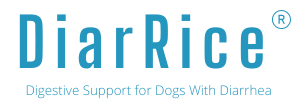Managing the Risks: Navigating Sudden Diet Changes in Canines
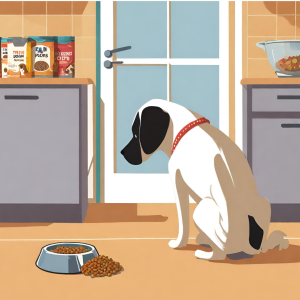
As a responsible pet owner, maintaining your dog’s health is a top priority. One aspect of their well-being that should never be overlooked is their diet. Navigating sudden diet changes in canines can be challenging, but with the right knowledge and guidance, you can ensure the optimal health and happiness of your canine companion. This blog post offers a comprehensive guide to managing the risks associated with sudden diet changes, understanding the science behind gastrointestinal upset, and learning strategies for safely transitioning your dog’s diet.
Key Takeaways
- Sudden changes in a canine’s diet can lead to serious gastrointestinal issues and long-term health complications.
- Properly transitioning a dog’s diet requires slow introduction of new food while monitoring for any signs of distress or discomfort.
- Consult your veterinarian prior to making dietary changes, pay attention to ingredient lists and portion sizes, and adjust the transition period based on age for best results.
The Perils of Sudden Diet Changes in Canines
Abrupt alterations in your dog’s eating habits, such as when a dog eats something unusual, can trigger gastrointestinal disturbances, including stomach upset, diarrhea, and vomiting. These issues often stem from an imbalance in gut flora, a key player in the digestion and absorption of nutrients. Long-term health complications like chronic digestive problems and nutrient deficiencies can also arise from sudden dietary switches.
For pet owners to circumvent these risks, comprehending the biological mechanisms of adverse food reaction and gastrointestinal reactions to dietary shifts is key, especially for those with sensitive stomachs. This knowledge allows them to exercise caution when incorporating new foods into their dog’s diet.
The Science Behind Gastrointestinal Upset
A sudden modification in a dog’s diet can instigate an inflammatory response in the intestinal lining, precipitating gastrointestinal symptoms such as vomiting and diarrhea. These symptoms can cause distress for both the dog and the owner, and may lead to dehydration if not immediately treated. Such dietary changes can disrupt the delicate equilibrium of gut flora in a dog’s digestive system, leading to these gastrointestinal issues.
Monitoring your dog’s stool during a dietary transition helps to detect any possible complications, such as diarrhea or vomiting. A vet-approved probiotic can mitigate gastrointestinal discomfort in dogs. Understanding the biology of gastrointestinal disturbances enables pet owners to undertake the right steps, ensuring a seamless and safe dietary transition for their dog.
Potential Long-Term Health Consequences
Incorrect dietary alterations can result in long-lasting health implications like chronic digestive complications, nutrient deficiencies, and even the emergence of food allergies. These issues can significantly affect your dog’s overall health and life quality.
To circumvent these problems, slow and gradual introduction of new foods is necessary for your dog’s digestive system to adapt. Spending time to comprehend the potential long-term health outcomes of sudden dietary shifts allows you to make educated choices about your dog’s diet, securing their continued health and well-being.
Strategies for Safely Transitioning Your Dog's Diet
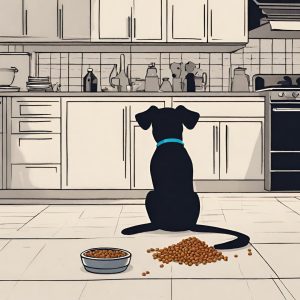
Transitioning your dog’s diet safely involves slowly introducing new food and carefully observing your dog’s reaction to the change. A slow transition is necessary to prevent gastrointestinal disturbances and give your dog’s digestive system time to adjust and produce the required enzymes for digesting the new diet.
Implementing these strategies aids your dog in adapting to their new diet without causing unwarranted discomfort or health complications.
Gradual Introduction of New Food
To incorporate new food into your dog’s diet, a gradual transition over a period of one week is recommended. Here’s a step-by-step guide:
- Begin by mixing 25% of the new food with 75% of the old food for the initial two days.
- Then, increase the proportion of new food to 50% on days 3 and 4.
- On days 5 and 6, increase the proportion of new food to 75%.
- By the seventh day, your dog should be fully acclimated to the new diet.
Modifying the transition speed based on your dog’s response is key to a seamless and successful dietary alteration.
Monitoring Your Dog's Response
Throughout the transition period, keep an eye on your dog’s behavior, dog’s stool consistency, and overall health to spot any possible problems. Should your dog exhibit vomiting, diarrhea, or other symptoms of gastrointestinal discomfort, adjusting the transition speed or consulting a veterinarian for advice might be necessary.
Keeping track of your dog’s reaction during the dietary shift ensures early detection and immediate resolution of any adverse reactions, leading to a successful transition to their new diet.
Identifying Food Allergies and Intolerances in Dogs
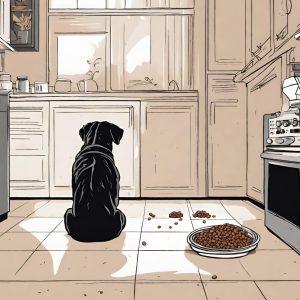
Food allergies and food intolerance can pose a major concern for some dogs, resulting in gastrointestinal disturbances and other health problems. Recognizing these in your dog requires knowledge of common allergens and steps to ascertain and tackle the root cause of the reaction. Collaborating with a veterinarian and making the necessary dietary changes can assist your dog in reaching optimal health and sidestepping the discomfort linked to food allergies and intolerances.
Common Culprits in Dog Food Allergies
Grains, certain protein sources (such as chicken, beef), and synthetic additives are among the most prevalent allergens in dog food. These allergens can trigger a range of symptoms in dogs, from gastrointestinal disturbances to skin irritations and respiratory problems.
Awareness of these common triggers enables pet owners to make educated choices when picking a dog food that satisfies their pet’s distinct dietary requirements and evades potential allergens.
Steps to Determine and Address Food Allergies
Recognizing food allergies in your dog necessitates collaboration with a veterinarian capable of conducting a dietary elimination trial and hypoallergenic food trial. These trials entail removing all foods currently being fed and initiating a rigorous elimination diet to help identify the specific allergens causing the reaction.
Once the allergen is pinpointed, avoiding any foods containing that ingredient when feeding your dog is essential to prevent additional adverse reactions related to food allergy and maintain their overall health and wellness.
Age-Related Considerations in Dietary Changes
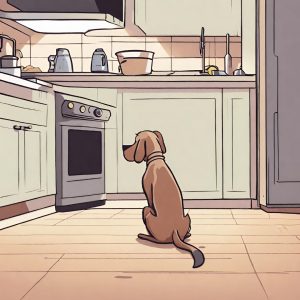
When altering your dog’s diet, taking into account age-related factors is significant since puppies and senior dogs have unique nutritional needs and may necessitate different strategies for dietary transitions.
Keeping these age-related considerations in mind ensures that your dog’s diet is customized to their particular life stage and provides the requisite nutrients for optimal health.
Puppies: Delicate Digestive Systems and Nutritional Needs
Puppies demand special diets and slow transitions owing to their delicate digestive systems and particular nutritional needs. Supplying puppies with a diet that fulfills their unique requirements is fundamental. This includes:
- Higher protein levels to support their growth and development
- Higher fat levels to provide them with energy
- Essential nutrients to ensure their overall health and well-being
By thoughtfully addressing the dietary needs of puppies, you can help them grow into healthy adult dogs.
Senior Dogs: Slower Transitions and Special Diets
With aging, dogs’ nutritional needs alter, and they may call for slower transitions and specialized diets to manage age-related health issues. Senior dogs might require diets with fewer calories, more protein, and a higher nutrient-to-calorie ratio to maintain their weight and overall health. Moreover, diets designed to address particular age-related health concerns, such as joint health, cognitive decline, and digestive health, can be beneficial for senior dogs.
Considering the unique needs of senior dogs ensures they continue to flourish in their golden years.
The Role of Breed and Size in Dietary Changes
Breed and size significantly influence dietary changes, as large and small breeds exhibit different nutritional necessities and responses to new diets. Comprehending these differences allows you to tailor your dog’s diet to their specific needs and effect a seamless transition during dietary changes.
Large Breeds: Joint Health and Controlled Growth
Large breed dogs need specialized diets for joint health and regulated growth, necessitating slower transitions to evade gastrointestinal problems. These diets should incorporate ingredients that bolster joint health, such as glucosamine, chondroitin, and omega-6 fatty acids, and have reduced energy and protein levels to prevent excessive growth.
By offering a diet customized to the requirements of large breed dogs, you can promote their joint health and ensure appropriate growth.
Small Breeds: Higher Calorie Diets and Kibble Preferences
Small breed dogs necessitate diets high in calories and may prefer smaller kibble sizes for easy consumption. Given their higher metabolic rate, small breeds need more calories per pound of body weight than larger breeds, making it crucial to supply them with a diet that fulfills their caloric needs. Furthermore, smaller kibble sizes can enhance digestion and prevent choking risks for small breed dogs.
Factoring in these considerations ensures that your small breed dog receives the right nutrition for optimal health.
Decoding Dog Food Labels: Making Informed Choices
Interpreting dog food labels is pivotal for making educated choices about your dog’s diet, including analyzing ingredient lists and nutritional adequacy statements. Understanding how to read pet food labels ensures that the food you select fulfills your dog’s specific dietary needs and provides comprehensive and balanced nutrition.
Ingredient List Analysis
When scrutinizing ingredient lists, it’s significant to verify that high-quality protein sources are listed first and to steer clear of potentially harmful additives. Ingredients are organized in order of weight, with the heaviest ones appearing first. This means the initial few ingredients are the primary constituents of the food. A careful examination of the ingredient list enables you to make educated choices about the quality and nutritional worth of the dog food you select.
Nutritional Adequacy Statement
A nutritional adequacy statement is a vital part of a dog food label, indicating whether the food satisfies the minimum nutritional criteria for dogs. This statement often appears as “Product X is formulated to meet the nutritional levels established by the AAFCO Dog Food Nutrient Profiles for a specific life stage” and assures that the food contains all the necessary nutrients in sufficient amounts to fulfill your dog’s daily needs.
Searching for a nutritional adequacy statement on dog food labels guarantees that the food offers complete and balanced nutrition for your dog’s particular life stage.
Common Mistakes and How to Avoid Them
When modifying a dog’s diet, common mistakes such as ignoring portion sizes and not consulting a veterinarian for advice can be avoided. Awareness of these potential pitfalls and adopting the right measures to prevent them ensure a seamless and successful dietary transition for your dog.
Overlooking Portion Sizes
Adjusting portion sizes is necessary when changing dog food, as transitioning to a new product with a different nutritional density can lead to over or underfeeding. Overfeeding can cause obesity and related health complications, while underfeeding can result in nutritional deficiencies and deteriorated overall health.
Closely monitoring and adjusting your dog’s food intake during a dietary transition guarantees they receive the right amount of nutrients and maintain a healthy weight.
Failing to Consult a Veterinarian
Before making any major changes to your dog’s diet, consultation with a veterinarian is strongly advised, especially if the animal has existing health issues or unique dietary needs. A veterinarian can offer customized nutritional advice based on your dog’s individual necessities and assist you in choosing a diet that satisfies their specific requirements.
Consulting with a veterinarian prior to making dietary changes guarantees that your dog’s diet is well-balanced and promotes their overall health and wellness.
Managing the risks associated with sudden diet changes in canines is crucial for maintaining their overall health and well-being. By understanding the science behind gastrointestinal upset, implementing strategies for safely transitioning your dog’s diet, and taking age, breed, and size-related factors into account, you can ensure that your dog receives the best possible nutrition. Always remember to consult a veterinarian for guidance and make informed choices when selecting dog food. With the right approach, you can help your canine companion thrive and enjoy a happy, healthy life.
Frequently Asked Questions
What happens if you suddenly change your dog's food?
Abruptly changing your dog's food can lead to gastrointestinal issues such as vomiting, diarrhea, and loss of appetite. To avoid these symptoms, it is important to transition your pup gradually when introducing a new diet.
Why is my dog being a picky eater all of a sudden?
It's possible that your dog's sudden picky eating could be related to health issues, such as allergies, dental problems, or a sensitivity to medications. It may also be due to anxiety from loneliness or boredom. If you're concerned about your dog's eating habits, it's best to speak to your vet so any health concerns can be ruled out.
How long will a dog have diarrhea after changing food?
If your dog develops diarrhea after changing food, you should put them back on their old diet and contact a vet if it persists for more than 24 hours. Most dogs will recover within 1-3 days and vomiting is quite common during the transition period.
How long should it take to transition a dog to a new diet?
It is recommended to transition a dog's diet over the course of one week, gradually increasing the proportion of new food while decreasing the old food.
What are some common allergens in dog food?
Common allergens found in dog food include grains, certain proteins (e.g. chicken, beef) and artificial additives, so it's important to read the label carefully when choosing a food for your pet.
Related Articles about Sudden Diet Changes in Dogs
Dog Diarrhea Diet Fix
Preventing Diet Changes
Dog Diarrhea Diet Signs
Managing Diet Changes
Consult Vet Diet Shifts
Safe Dog Diet Changes
Balanced Diet For Dogs
Dog's Slow Diet Changes
Risks of Sudden Diet Changes
Jeffrey Kordell
Dr. Jeff Kordell, DVM is a practicing veterinarian in the northern suburbs of Chicago. He is a graduate of the University of Illinois Veterinary School. Dr. Kordell owns Animal Medical Center at Fort Sheridan and has had his own private practice for over 30 years. He is the co-founder of K&S Veterinary Labs LLC the maker of DiarRice.
